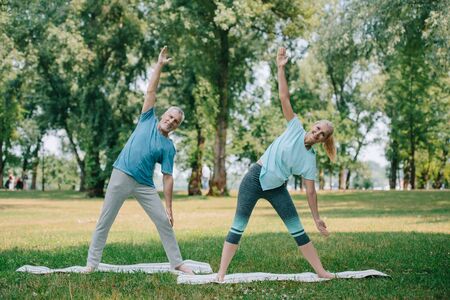Understanding Arthritis in Indian Seniors
Arthritis is a prevalent condition among seniors in India, affecting not only their physical comfort but also their overall quality of life. This joint disorder is characterized by pain, swelling, and stiffness, making daily movements challenging for many elders. In the Indian context, arthritis is often linked to factors such as genetics, dietary habits, traditional lifestyles, and even climate. Many seniors in India have spent years performing physically demanding tasks or sitting cross-legged on the floor, which can contribute to joint stress over time. Additionally, the humid or cold weather in different regions of India may worsen symptoms for some elders.
Beyond biological causes, cultural aspects such as the tendency to ignore early symptoms or rely on home remedies can delay timely medical intervention. Many Indian seniors also face challenges like limited access to healthcare resources and social stigmas related to aging and dependency. Understanding these unique challenges is essential for designing safe yoga practices that respect both the physical limitations and cultural sensitivities of Indian elders living with arthritis.
2. Benefits of Yoga for Arthritis Management
For seniors living with arthritis in India, yoga offers a gentle yet effective way to manage joint health and improve overall quality of life. The ancient practice of yoga, rooted deeply in Indian tradition, provides physical, mental, and emotional support that aligns with holistic wellness principles familiar to many elders. Let us explore how yoga can specifically benefit those dealing with arthritis:
Joint Health Support
Yoga asanas (postures) such as Tadasana (Mountain Pose), Vrikshasana (Tree Pose), and gentle variations of Sukhasana (Easy Pose) promote flexibility and lubrication in the joints. Regular practice encourages synovial fluid production, which is essential for joint movement and comfort. This is particularly valuable in the Indian context where daily activities often involve sitting cross-legged or squatting, movements that require healthy joints.
Pain Reduction and Mobility
Many seniors report reduced pain and stiffness after incorporating yoga into their routine. Slow, mindful movements practiced in yoga help relax tight muscles around affected joints, reducing pressure and discomfort. Breathing techniques like Anulom Vilom (alternate nostril breathing) further support relaxation and pain management by calming the nervous system.
How Yoga Benefits Seniors with Arthritis
| Aspect | Benefit | Example Yoga Practice |
|---|---|---|
| Joint Flexibility | Improved range of motion | Gentle stretching poses (e.g., Ardha Matsyendrasana) |
| Pain Management | Reduced inflammation and discomfort | Meditative breathing (e.g., Pranayama) |
| Mental Wellbeing | Lower stress levels, improved mood | Meditation (e.g., Dhyana) |
| Daily Functionality | Easier movement in daily tasks | Chair yoga adaptations |
Improved Daily Life for Seniors in India
The cultural familiarity with yoga makes it accessible to most seniors across India. Whether practicing at home, in community parks, or at local temples, elders find that yoga helps maintain independence and self-reliance. Improved mobility means greater participation in family gatherings, religious rituals, and social events—an essential aspect of Indian senior life.
Culturally Relevant Considerations
Seniors are encouraged to begin their yoga journey under the guidance of certified instructors who understand age-related limitations and cultural sensitivities. Practices can be adapted using props like blankets or chairs commonly found at home, ensuring safety while honouring traditional values of respect for ones body and mind.

3. Key Precautions for Safe Practice
Essential Guidelines for Indian Seniors with Arthritis
Before starting any yoga practice, seniors in India living with arthritis should first consult a qualified healthcare professional or a certified yoga therapist familiar with joint conditions. It is important to discuss your medical history, current medications, and any previous injuries. Start your yoga journey with gentle movements and always listen to your body, respecting its limitations. Incorporate props such as cushions, bolsters, and chairs—tools commonly found in Indian homes—to provide extra support and reduce strain on the joints.
Cultural Considerations in Yoga Practice
Yoga is deeply rooted in Indian culture, and many seniors may already be familiar with certain practices from childhood or community gatherings. However, it is crucial to adapt traditional postures (asanas) to suit individual needs rather than striving for perfection. Practising yoga in a group setting, such as at a local temple hall or through online sessions in the preferred regional language, can provide motivation and foster a sense of belonging. Ensure that the yoga space at home is clean, peaceful, and ventilated—honouring the Indian value of ‘shuddhi’ (purity) in daily routines.
Health Checks Before and During Practice
Regular health check-ups are essential to monitor arthritis progression and overall well-being. Blood pressure, sugar levels, and joint mobility should be reviewed periodically. If you experience increased pain, swelling, or fatigue during practice, pause immediately and seek advice from your doctor. Remember that each person’s journey is unique; modify poses based on comfort and avoid comparing progress with others. Staying hydrated by sipping warm water—an age-old Indian habit—and wearing loose cotton clothing will further enhance safety and comfort during yoga sessions.
Conclusion: Customised Care for Every Senior
By integrating these essential guidelines with respect for cultural practices and regular health monitoring, Indian seniors with arthritis can enjoy a safe and enriching yoga experience. Personalised adjustments ensure that every step taken on the mat supports holistic healing and promotes independence in daily life.
4. Recommended Yoga Asanas and Modifications
For seniors in India living with arthritis, yoga can be both safe and accessible when the right asanas (postures) are chosen and adjusted to individual needs. It is important to honour your body’s limitations while benefiting from the gentle movement, breathwork, and mindful awareness that yoga offers. Here is a curated selection of gentle yoga postures, along with practical modifications using common Indian household props such as cushions, dupattas, chairs, and walls. This approach helps create a supportive environment for practice within the comfort of your home.
Gentle Yoga Asanas Suitable for Seniors with Arthritis
| Asana Name | Description | Suggested Modification | Common Indian Home Prop |
|---|---|---|---|
| Tadasana (Mountain Pose) | Standing posture to improve balance and posture. | Practice near a wall or hold onto a sturdy chair for support. | Chair, wall |
| Vrikshasana (Tree Pose) | Balance pose to strengthen legs and improve focus. | Keep toes of lifted foot on floor and use wall for balance. | Wall |
| Sukhasana (Easy Cross-Legged Pose) | Sitting posture for relaxation and gentle hip opening. | Sit on folded blanket or cushion to ease knee discomfort. | Cushion, folded blanket |
| Bhujangasana (Cobra Pose) | Gentle backbend to relieve stiffness in the spine. | Place a rolled towel under the chest for extra support; keep elbows bent. | Rolled towel |
| Ardha Uttanasana (Half Forward Bend) | A standing stretch for the back and hamstrings. | Use a table or chair seat for hands instead of reaching toward the floor. | Table, chair |
| Ananda Balasana (Happy Baby Pose) | Lying down pose to gently open hips and relax lower back. | Hold a dupatta around feet to reduce strain on hands and knees. | Dupatta |
| Makarasana (Crocodile Pose) | Restorative prone position for deep relaxation. | Add extra cushioning under ankles or forehead as needed. | Pillow, towel |
Additional Tips for Safe Practice at Home
- Create Space: Clear a small area in your home, ensuring there are no obstacles nearby.
- Breathe Mindfully: Focus on slow, deep breaths. If any posture feels painful, return to relaxed breathing in a comfortable seated or lying position.
- Short Sessions: Practice shorter sessions more frequently rather than longer ones that may cause fatigue or discomfort.
Cultural Considerations: Embracing Familiarity
Your home can become your sanctuary for healing. Using familiar objects like old sarees as yoga mats or practicing on your verandah during early morning hours can make the experience comforting and culturally resonant. Invite family members to join you in gentle stretches or relaxation moments, turning yoga into a shared ritual of well-being.
Your Journey Matters
The key is listening to your body each day. With patience and consistency, these adapted yoga practices can support joint mobility, reduce pain, and uplift your spirit while staying rooted in the warmth of your own home environment.
5. Incorporating Mindfulness and Self-Care
Blending Mindfulness into Your Yoga Practice
For seniors living with arthritis in India, yoga is not just about movement; it is a journey inward. Begin your practice by setting an intention—called ‘Sankalpa’ in Sanskrit—focusing on gratitude, healing, or simply being present. As you move through gentle asanas, pay close attention to bodily sensations, breath rhythm, and emotional responses. This mindful awareness can reduce stress, increase pain tolerance, and foster inner calm.
The Power of Pranayama: Breathing Techniques for Well-being
Traditional Indian pranayama (breathwork) practices such as Anulom Vilom (alternate nostril breathing) and Bhramari (bee breath) are highly effective for seniors with arthritis. These techniques help oxygenate the body, reduce inflammation, and calm the mind. Always practice pranayama seated comfortably, perhaps on a chair or with back support, to ensure safety. Remember to start slow and consult your yoga teacher before trying new techniques.
Ayurvedic Self-Care: Embracing Holistic Traditions
Ayurveda, India’s ancient science of life, offers self-care rituals that beautifully complement yoga for arthritis management. Gentle abhyanga (self-massage with warm sesame or coconut oil) before practice nourishes joints and improves circulation. Drinking warm turmeric milk (haldi doodh) or herbal teas like tulsi after yoga supports joint health and soothes inflammation. Using simple Ayurvedic routines—like applying warm compresses to sore areas or incorporating spices such as ginger into meals—creates a nurturing environment for healing.
Cultivating a Daily Ritual
Combine mindfulness, breathing exercises, and Ayurvedic self-care into a daily routine tailored to your unique needs. Even five minutes of focused breathing or a mindful cup of herbal tea can make a difference. Listen to your body, honor its wisdom, and adapt practices as needed. With patience and consistency, this holistic approach helps seniors with arthritis experience greater comfort and vitality through yoga.
6. Community Support and Resources
For seniors in India living with arthritis, building a supportive community is essential for safe and joyful yoga practice. Connecting with experienced local instructors who understand the unique needs of seniors is the first step. Look for certified yoga teachers or therapists who specialise in therapeutic or senior yoga, preferably those trained in traditional Indian schools such as S-VYASA, Bihar School of Yoga, or Kaivalyadhama. These institutions often have directories or can recommend trusted instructors familiar with modifications for joint health.
Finding Local Instructors
Start by visiting your nearest yoga studio or wellness centre and inquire about classes specifically designed for seniors or those with limited mobility. Many cities across India now offer gentle yoga classes at community centres, temples, or even housing societies. Websites like Yoga Alliance Professionals India and the Indian Yoga Association provide searchable lists of accredited professionals.
Joining Community Yoga Groups
Participating in group yoga sessions fosters encouragement and motivation among seniors. Look out for neighbourhood parks where morning yoga groups gather—these are often led by seasoned practitioners willing to guide newcomers. Senior citizen clubs, RWAs (Resident Welfare Associations), and NGOs like HelpAge India also organise special wellness events and group classes tailored to elderly needs.
Trusted Indian Resources
For ongoing support, explore resources such as Doordarshan’s yoga programmes, online sessions from respected gurus like Baba Ramdev or Sri Sri Ravi Shankar, and free video classes available in Hindi and regional languages. Reading magazines like Yog Sandesh or consulting publications from the Ministry of AYUSH can further enhance your understanding. Always consult your doctor before joining any new programme and remember: listening to your body and seeking guidance from empathetic, knowledgeable sources will help you experience the benefits of yoga safely and sustainably throughout your golden years.


